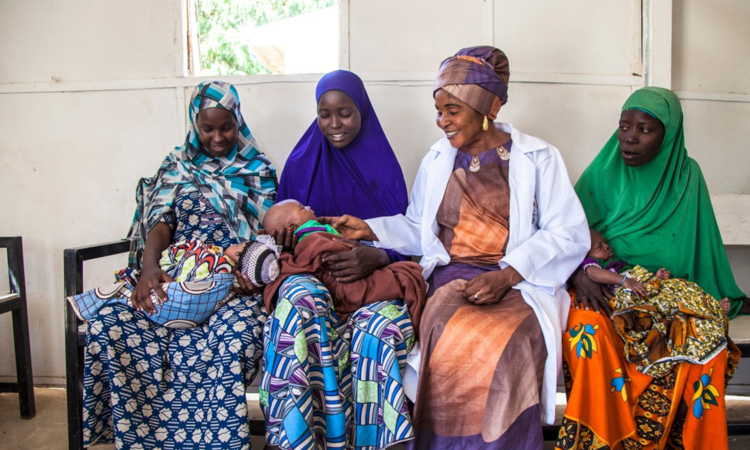Beyond numbers: database brings to light quality of care for women and their babies at a national scale – World Health Organization (WHO)

Quality, standardized data on the health of women and girls who are pregnant or have recently given birth, and their babies, is crucial to inform the design of interventions to help to safeguard their lives and well-being.
Strong health systems, backed by an efficient health information system – informed by quality data – helps to ensure quality, respectful, safe and dignified health care for girls and women, as advocated by WHO guidelines.
In recognition of this, WHO, HRP and Federal Ministry of Health of Nigeria established the Nigeria Maternal and Perinatal Database for Quality, Equity and Dignity (MPD-4-QED) programme – a standardized electronic platform for the collection of routine maternal and perinatal data, including mortality audit data, in health facilities which can be used for monitoring clinical care performance and quality improvement across Nigeria.
Launched by the then Honourable Minister of Health, Professor Isaac F. Adewole on the 25th of April, 2019 in Abuja, and funded by MSD for Mothers, the Quality, Equity and Dignity programme supported the establishment of the MPD-4-QED Project in 54 tertiary health facilities nationwide.
A new research paper, published recently in eClinicalMedicine, demonstrates the incredible scale, depth and detail of the database. The results record the quality of care for 76,563 women and their babies admitted for birth or due to complications shortly after birth to tertiary hospitals in Nigeria. Information on the quality of care for woman and their babies was collected for all women – from those who were healthy to those who faced complications. While the results show that there is room for improvement, the database provides insight into potential intervention strategies that could lead to progress for helping to ensure maternal and newborn survival.
More than showing mere numbers, the database and the research also brought to light important depth and detail in its findings. One such finding was the association between the risk of death for women and their babies when they lacked a companion of their choice during childbirth, and when the labour was not monitored with appropriate tool.
Beyond the findings, the success of implementing a nationwide programme to collect quality of care data on women and their babies across tertiary facilities in Nigeria is unprecedented.
“This database is an example of excellence. In terms of how it helps to improve and standardize data collection on the specific health outcomes and women and babies across Nigeria,” says Dr Olufemi Oladapo, Head of the Maternal and Perinatal Health Unit at WHO and HRP.
Many countries across the world, lack centralized, national databases dedicated to the health of women and their babies. In addition, some do not have effective registration systems for births and deaths, and data from across countries are often unavailable and not standardized. This means it can be difficult to combine, or aggregate, data to get a national picture of the health outcomes of girls and women.
The MPD-4-QED database, addresses precisely these issues, as the paper published demonstrates.
The national coordinator of the MPD-4-QED Programme, Professor Jamilu Tukur comments that, “As the findings show, the database was able to give a more accurate picture of quality of care received by women and their babies across an entire country. With the right funding, and when implemented in a similarly effective way, it could have great potential for use in countries across the world.”
“We know that good quality data can help to save lives and improve health and well-being, so we expect that this database will really help to improve the quality of care that girls and women receive,” Dr Oladapo concludes, “We really want to ensure the database continues to grow, and to support the work of the Quality, Equity and Dignity programme.”
Indeed, WHO and HRP are working with the Nigeria Ministry of Health to sustain the project into the future, and there are now around 200,000 women recorded in the database
Related
WHO labour care guide: user’s manual
News
Fact sheets







